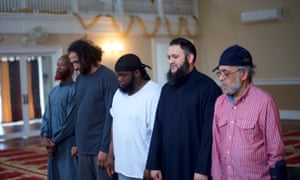In the third week of the first Ramadan of the Donald Trump presidency, seven Muslim families gathered for an iftar dinner to conclude the day’s fast at a spacious home in a recently developed suburb of Easton, Pennsylvania.
Men and women congregated in separate rooms. Children with iPhones and fidget spinners ran down a hallway and through the kitchen, where sweet dates were piled on a plate and metal tubs of haleem, chicken biryani, crispy south Indian chicken 65, curry and rice sat warming. To drink, there was mango lassi and milk with rooh afsah and ice water and Coca-Cola.
After sunset, the group had a snack, and then a prayer in the basement, in a corner opposite a big TV and a deep couch. At the end of the night, Rizwan Butt, president of the Easton-Phillipsburg Muslim Association, shared a letter that had been sent to him at the mosque recently, following news reports of a petty cash theft by an unaffiliated maintenance worker.
The letter read:
Hello Neighbor,
I saw in the newspaper that a man stole from you and I want to help replace some of what was lost.
Be well,
[Signed]
“She sent a check,” Butt said. “I could sit here and tell you a hundred stories like that.”
The “stories like that” began to accumulate quickly in late January, Butt said, after Trump first announced his ban on travelers from seven Muslim-majority countries, a restriction later revised to six.
“The reaction in general, since the election – the reaction has been unbelievable, in a positive way,” Butt said.
“It was ominous,” he said of the travel ban. “We all understood that this was just the beginning of a broader campaign with an ultimate goal that was defined very well in the [presidential] campaign, which was banning more Muslims until something was ‘figured out’, whatever ‘figured out’ is.”
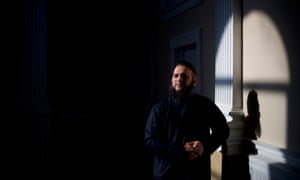
Bracing for potential conflict, the Muslim community instead found new lines of communication opening, Butt said.
“Everyone you can imagine came forward. I received letters at the mosque from neighbors, concerned people from the community, saying: ‘We’re here to stand by you, we don’t agree with this,’” Butt said. “Offers to come to the mosque to help with safety and security. One woman called me up and said she would be willing to drive the women in our community around so that they would feel safe. She would take time off work to do that.”
When Butt first arrived in Easton 17 years ago, he said, there were perhaps five to 10 Muslim families that he knew of in the immediate area. Today there are about 100, and more than 1,000 Muslim families in the greater Lehigh Valley. More than 50% hail from south-east Asia, with additional contingents from Turkey and the Middle East, including refugees, and from the United States itself.
Muslim immigrants were moving into the region for the same reasons other people do, Butt said – quality of life and economic opportunity. Butt is a software services engineer who grew up in Bahrain. The vice-president of the Muslim association works in insurance. The host of the recent iftar celebration works in IT for Citigroup.
The quality-of-life metric had sustained some dents during the Trump campaign and afterwards, Butt acknowledged.
“We have had some sisters, because they’re the most prominent symbols of Islam, as they walk around, in the way they dress, they’re prominent,” he said. “So they’ve had some name-calling, honking on the road, things of that sort. One sister who does cover herself more than others, she did get some bad comments when she was going out shopping.
“But aside from that, no physical harm, thank God. No one’s come and sprayed graffiti on our mosques. Our mosques didn’t receive any phone calls or letters of hate, but people on the street did receive that.”
‘It bubbled to the surface’
The political rise of Donald Trump inflamed racial, ethnic and religious tensions across the United States. Northampton County, Pennsylvania, the scene of a key Trump victory last November, was not immune. A year’s worth of ugly incidents tells the tale.
Anecdotes and interviews identify bullying and name-calling in schools, including use of the N-word. A crop of Confederate flags last fall, as the election approached. Verbal altercations at work, or sudden expressions from co-workers of previously hidden racist sentiments. Disparaging statements about immigrants. Taunting in the street of veiled Muslim women. Swastika graffiti. Ugly confrontations of a kind that didn’t previously seem to have happened.
Occasionally, such incidents made the papers. In January, the district attorney charged a white student at Saucon Valley high school with cyber-harassment and ethnic intimidation for sharing a video in which the student used the N-word and made gibes about welfare checks and KFC while filming a black student eating chicken wings. In April, five alleged white supremacists were indicted following an FBI raid just across the county line that officials said revealed a conspiracy to sell drugs, launder money and stockpile weapons.
Over the past six months, the Guardian has been conducting interviews in Northampton County to interrogate the particulars of Trump’s four-point victory here last November. Northampton is one of three Pennsylvania counties to vote twice for Barack Obama before falling for Trump. But unlike the other two such counties, Luzerne and Erie, Northampton has been adding residents and jobs, and property values are up, although the local economy has not fully recovered from the closure 20 years ago of the behemoth Bethlehem steel manufacturing plant.
While social tensions here, as elsewhere across the United States, long predate Trump and his jeering rhetoric, they now are summarily attached to the president. Interviews with dozens of county residents confirm that Trump’s presidential campaign, victory and slowly lengthening tenure have coincided with a perceived uptick in bias-motivated attacks and activity.
“You are seeing more Confederate flags in the Trump era. You do see that,” said Lance Wheeler, president of the Easton, Pennsylvania, chapter of the NAACP. “Does race play an issue? I do think so. I think Trump did get people to get out and vote who thought, ‘Hey, America’s going to be great again,’ meaning: ‘We won’t have a minority in charge again.’”
Incidents of bigotry do not define the place, lifelong residents and more recent arrivals alike are at pains to say. Trump supporters in particular – former steelworkers or evangelical Christians, Republican activists or service employees, former Democrats, contractors, clerks, tailors, framers, installers, drivers, businesspeople, barbers – have explained why they don’t think racism played a role in Trump’s victory in the county.
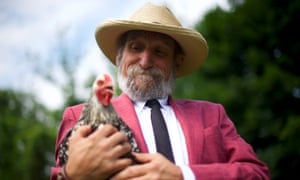
People cast ballots for Trump because they did not like Hillary Clinton and were starving for change, not out of bias, they say. It can seem as if every former Clinton supporter in the county has a friend or many friends who were Trump supporters, and vice versa. The US may seem to be in a perpetual stage of division and rage, but in this county, those enduring social contacts suggest the opposite.
And then there were those two Obama victories. In 2008, America’s first black president won here by 12 points, with very high voter turnout comparable to that of 2016.
Gary Asteak handles criminal defense cases for the ACLU in Easton, where he was born and has practiced law for four decades.
“The Trump era gave rise to the sense that the truth doesn’t matter, lies are OK, arrogance and pontification are rewarded, bullying works, and racial disparagement bubbles to the surface,” said Asteak, sitting on a porch on his chicken farm in lower Nazareth, where he is township solicitor. “Using the N-word and other pejorative references become OK because the kids are hearing it at home. They think that because the crowds are cheering when Trump says ‘throw ’em out’, it’s OK to put your hands on someone.
“It bubbled to the surface.”
‘You had Obama, now we have Trump’
The Northampton county seat, Easton, home to Crayola crayons, is notable in the region for its racial and ethnic diversity. The city of 27,000 residents is 14% African American, 14% Latino and just 67% white, compared with 88% in the county overall. Easton is home to old, established Italian and Jewish communities, a Lebanese community, and eastern European, Irish, German, and white Anglo-Saxon Protestant communities. The Hispanic and Latino community in Easton includes Colombians, Nicaraguans, Venezuelans, Puerto Ricans, Costa Ricans and Cubans.
“We’ve always been very diverse. That’s one of our great strengths as a community,” said Bob Freeman, who grew up in Easton and has served as a state representative from the city since 1982. “It gives us our vibrancy, it gives us our vitality. And it also has made, I think, for a very strong, progressive Democratic party here.”
Donald Trump lost badly in Easton, drawing just 25%–30% of the vote in most precincts. Yet “there was a grave concern that president Trump would be elected” at the national level, said Phil Davis, a pastor who has led the Greater Shiloh Baptist Church on the city’s south side for 12 years, on the heels of his father’s 30-year tenure.
The church sits on the site of a former African American neighborhood that was razed in the 1970s in a misguided urban “renewal” scheme, Davis said. A Sunday service might draw 1,000 people, plus others who watch online. The congregation is 85% African American and includes members of families who migrated to the region a century ago, drawn by the manufacturing boom at Bethlehem Steel and driven from the south by Jim Crow-era racial oppression.
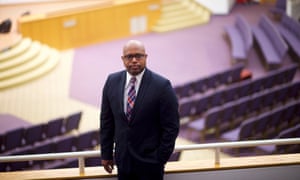
During the Trump campaign, Davis said, he had counseled multiple community members who had experienced racist attacks at work.
“It was almost as if the candidacy of Donald Trump emboldened those who may have felt some level of racism and just had not had an opportunity to voice that,” Davis said. “There were a few incidents, and we had to encourage folks not to retaliate in kind, as people were spewing hate specifically at African American folks.
“You know, ‘You had Obama, now we have Trump’ – that kind of confrontation, that really drove some people mad, over why this type of behavior was happening.”
Anecdotes about such workplace confrontations come up in conversations with white people in Northampton County, too. A former steelworker who asked not to be named told the story of a face-off with a fellow white bus driver whose badmouthing of Obama escalated with the growing success of the Trump campaign.
“I came right out one day and I told this one guy who was really – he said, you know: ‘One bullet could have solved our problems.’ And to me that’s not a good way to talk,” the former steelworker said.
“I looked at him right in the eyes and I said, ‘You know what, you know why you don’t like Obama? Because he’s a [N-word]. Say it. I’ll think more of you. That’s why you don’t like Obama.’
“He lives up in the boonies, you know, the good ol’ boys. He just went back like this” – a dismissive wave of the hand – “he didn’t want to hear that from me. Well – admit it, you know?”
‘Our system is broken’
Racially charged incidents inside schools in the past year have been particularly disturbing and not particularly uncommon, multiple people said. After the video of the African American student eating chicken circulated, there was a physical confrontation between the two students involved, and the African American student was charged with misdemeanor assault.
Asteak, the Easton lawyer, represented the student in the case (the student ultimately entered a diversionary program and was not convicted). “There’s been more of a bubbling undercurrent of school disturbances,” Asteak said. But “these situations are kept under wraps. It was an unusual situation in Saucon, where the police stepped in and charged the kid.”
The episode is not closed, however. In May, the parents of the African American student brought a federal civil rights case against the school district, alleging a failure by the school to stem incidents of racial intimidation going back to 2013.
“It all starts in the home,” said Wheeler, the NAACP president. “When kids act out, when kids start wearing belt buckles with the Confederate flag on it, that’s all in the home. Home should be able to say, ‘Listen, where do you get that from? That’s not in our house.’
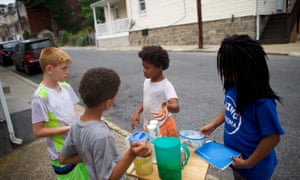
“Prejudice is taught, and learned, and shown. Race is learned.”
After news spread about the FBI raid on the white supremacist cell in neighboring Phillipsburg, Davis said, members of the Greater Shiloh church decided to hold a rally in the city “to try to bring some healing to the community”.
“I don’t want to paint a picture of a city that has not worked diligently to bring balance and equality to our community,” Davis continued. “The problem, I think, is that our system is broken. And when the system is broken, change is very difficult.”
“Easton is a great, diverse city,” Wheeler said. “There’s issues out there. We can’t let that go. Easton, it’s not set back. But there’s some work to do.”
Sign up for regular email dispatches throughout the year to hear from Tom and the people of Northampton County
